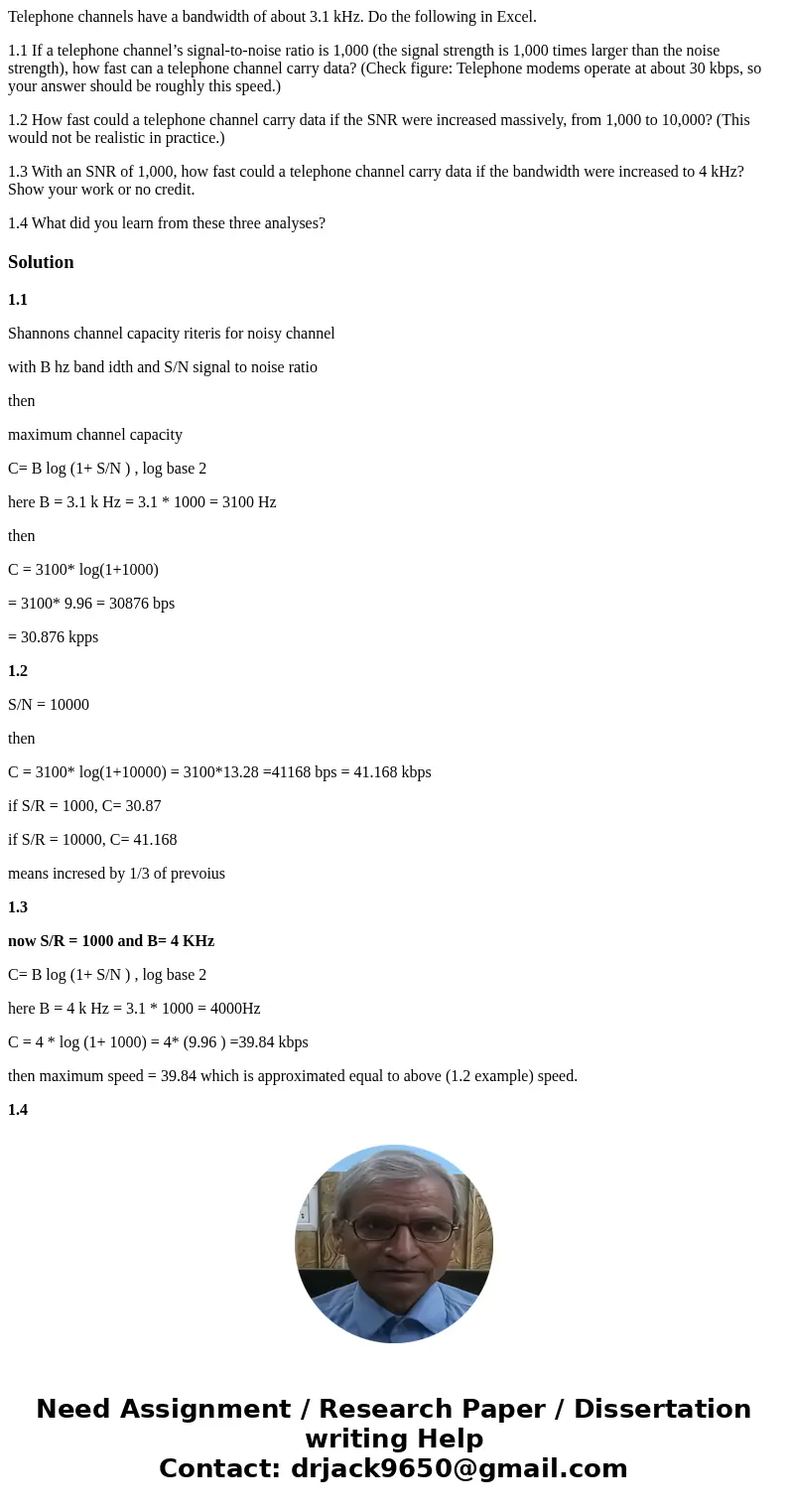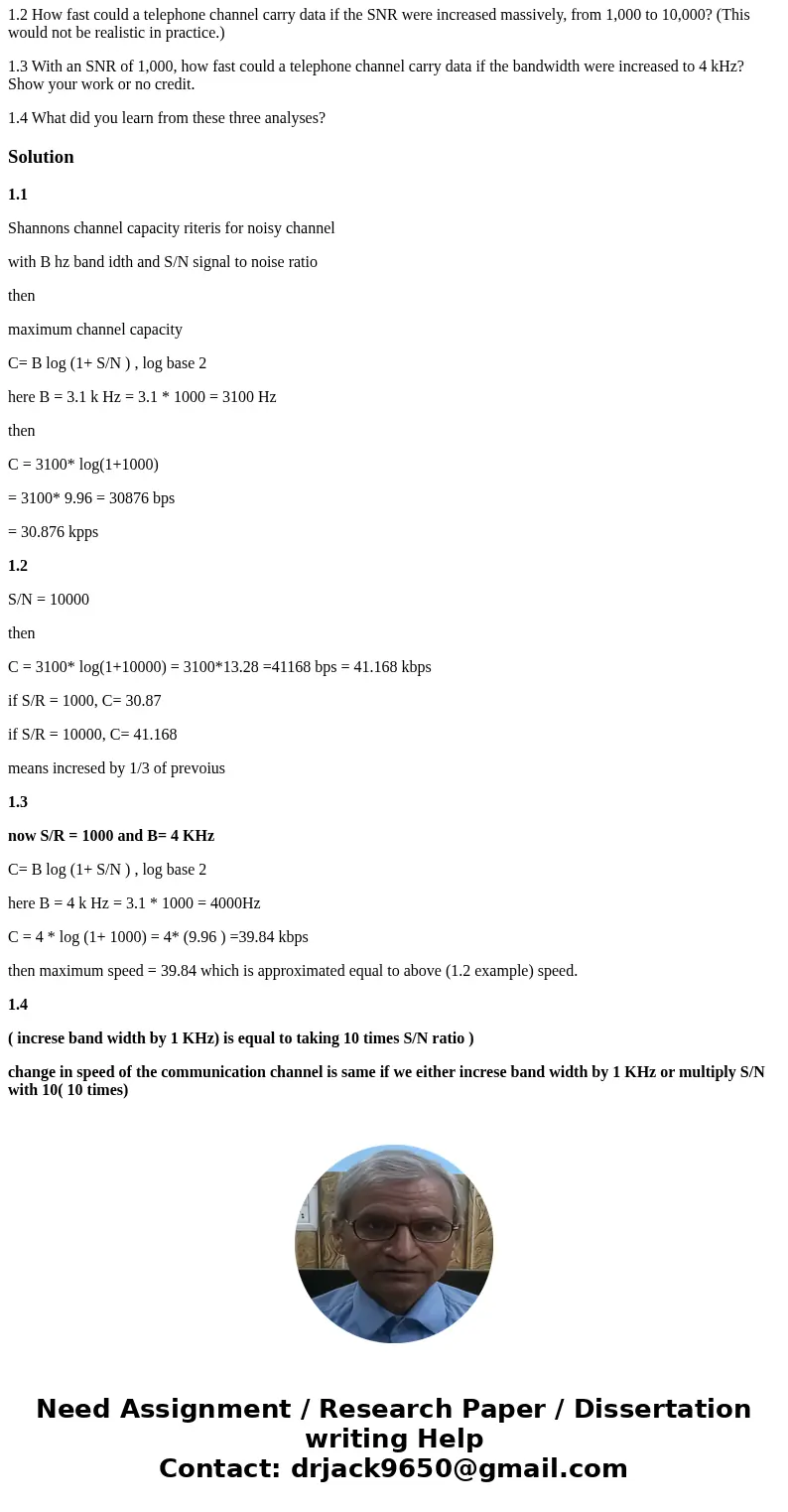Telephone channels have a bandwidth of about 31 kHz Do the f
Telephone channels have a bandwidth of about 3.1 kHz. Do the following in Excel.
1.1 If a telephone channel’s signal-to-noise ratio is 1,000 (the signal strength is 1,000 times larger than the noise strength), how fast can a telephone channel carry data? (Check figure: Telephone modems operate at about 30 kbps, so your answer should be roughly this speed.)
1.2 How fast could a telephone channel carry data if the SNR were increased massively, from 1,000 to 10,000? (This would not be realistic in practice.)
1.3 With an SNR of 1,000, how fast could a telephone channel carry data if the bandwidth were increased to 4 kHz? Show your work or no credit.
1.4 What did you learn from these three analyses?
Solution
1.1
Shannons channel capacity riteris for noisy channel
with B hz band idth and S/N signal to noise ratio
then
maximum channel capacity
C= B log (1+ S/N ) , log base 2
here B = 3.1 k Hz = 3.1 * 1000 = 3100 Hz
then
C = 3100* log(1+1000)
= 3100* 9.96 = 30876 bps
= 30.876 kpps
1.2
S/N = 10000
then
C = 3100* log(1+10000) = 3100*13.28 =41168 bps = 41.168 kbps
if S/R = 1000, C= 30.87
if S/R = 10000, C= 41.168
means incresed by 1/3 of prevoius
1.3
now S/R = 1000 and B= 4 KHz
C= B log (1+ S/N ) , log base 2
here B = 4 k Hz = 3.1 * 1000 = 4000Hz
C = 4 * log (1+ 1000) = 4* (9.96 ) =39.84 kbps
then maximum speed = 39.84 which is approximated equal to above (1.2 example) speed.
1.4
( increse band width by 1 KHz) is equal to taking 10 times S/N ratio )
change in speed of the communication channel is same if we either increse band width by 1 KHz or multiply S/N with 10( 10 times)


 Homework Sourse
Homework Sourse